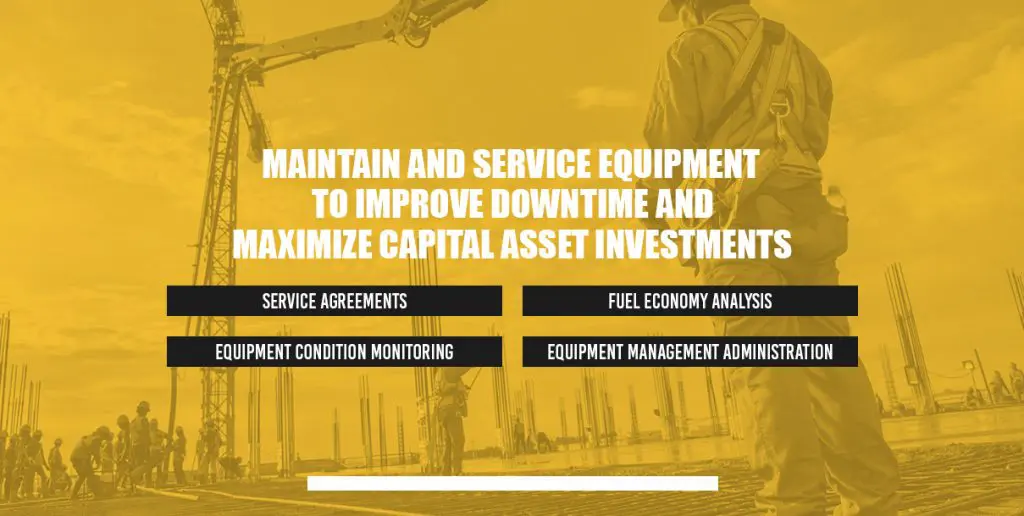How to Improve Construction Site Efficiency
Pre-construction planning, site management, employee productivity, safety, and risk mitigation: These are the things that make or break construction site efficiency — and keep supervisors up at night.
For your reputation and consistent, profitable returns, today’s construction sites need cutting-edge tools and resources that keep construction bids poised, costs economical, and all aspects of worksite project management effective. There are ways to improve the efficiency of the construction process — but does the promise sound too good to be true?
We don’t think so.
Construction Site Efficiency: A Competitive Advantage
In the construction world, efficiency is the linchpin of success. Only one-fourth of construction projects are completed within 10% of their original timeframes. About 90% of today’s construction workers perceive the industry as unproductive. These statistics emphasize the need for a paradigm shift in operational methods to unlock the true potential of skilled labor.

The impact of construction-site labor inefficiencies is colossal, amounting to billions of dollars in losses yearly. These financial burdens impede project progress and dent the industry’s financial stability. By implementing restructured infrastructure and operational models, the construction industry can unlock considerable savings.
Fortunately, there are many ways to improve construction efficiency. With “business-as-usual” approaches falling short, more and more industry professionals are searching for ways to increase the efficiency of construction worksites without causing seismic downtimes due to productivity overhaul.
We’ve outlined three key domains where project managers, supervisors and foremen and women can address some of today’s most pressing concerns and provide core improvements. These domains serve as the building blocks for strategies that are as manageable as they are modern.
They are:
- Systematize and Improve Workflows to Reduce Downtime
- Leverage Construction Technologies Like Mobile and Project Management Software for More Efficient Fleet Management
- Maintain and Service Equipment to Maximize Asset Administration
Read on to see each key domain described in depth, including examples, research, and relevant action steps.
1. Improve Workflows to Reduce Downtime
The processes that govern both daily, onsite construction activities and operations, as well as those involved in organizational and administrative decision-making, are the first places to adopt efficiency improvements.
In other words, reviewing and realigning daily workflows is a way to see real productivity changes across your construction sites.
We know words like “workflow” and “operations” get tossed around a lot in the construction world. However, the smaller the task, the more likely people are to overlook it. Gradual workflow improvements like the ones below can fundamentally revitalize how fast, how well, and how smoothly work moves along.
How to Create More Efficient Onsite Labor Workflows
- Efficiency is the cornerstone of success in the construction industry. Optimizing onsite labor workflows can achieve this goal. Consider the following solutions for improving efficiency in construction site labor workflows:
- Implementing a data-driven production measuring model: Construction firms must adopt a comprehensive and data-driven production measuring model to streamline labor expenses and improve productivity. This model ensures the deployment of adequately sized crews, establishes logical production rates as benchmarks, and allocates appropriate staff hours to meet these targets. Companies can achieve consistent workflow optimization using this standardized, data-backed formula across all projects.
- Introducing performance incentives (gamification): Complementing the production measuring model, performance incentives, also known as gamification, can motivate and reward construction crews and site managers who meet or exceed predetermined project benchmarks. These incentives could take various forms, including cash bonuses, profit sharing, gifts, or special compensation based on benchmarks directly within a manager’s or team’s control.
- Exploring modular and offsite fabrication partnerships: To alleviate the burden on onsite workforces and enhance productivity, construction firms should consider leveraging modular, pre-fabrication, and offsite fabrication partnerships. This approach involves assembling specific construction components beforehand in outsourced factories and then transporting them to the building site. Additionally, adopting modular techniques for specific elements can expedite the construction process further, leading to more efficient and cost-effective steps.
- Developing efficient decision and management workflows: Equipping construction work sites with devices for real-time communication between fleet, project supervisors, and upper management will increase efficient decision-making. Regular check-ins, daily or as needed, provide a platform for key decision-makers to review progress, address queries and collaboratively find solutions to unexpected site issues.
- Using project-specific building information modeling (BIM): Integrating project-specific BIM into construction projects serves two vital purposes. Firstly, BIM significantly reduces project organization, setup, and logistics timelines by providing pre-programmed portrayals of the entire lifecycle of the construction project. Secondly, BIM reduces downtime caused by miscommunication or lack of direction from supervisors, as it offers a resource accessible to all stakeholders. This ensures adherence to the project’s overarching plan and schedule.
- Embracing LEAN training: To eliminate wasteful practices, minimize downtime and optimize resources, construction firms should consider LEAN training. Site supervisors can undergo required LEAN construction certification courses and then collaborate with upper management to implement LEAN principles across projects and the entire organization.
One or a combination of the above methods can help construction organizations boost construction site efficiency across the board. Experiment with various solutions to see which options suit your company and your team best.
2. Leverage Construction Technologies for More Efficient Fleet Management
It is no exaggeration to claim technology will transform the construction industry. From planning construction sites to how equipment gets maintained to how onsite crews receive and check off tasks and assignments, construction industry software and data should be sought after, not stymied.
Only 29 percent of construction managers report consistently using the software and applications at their disposal. What’s more, 40 percent rely on paper plans and documents while onsite. More than half still manually prepare paper-based daily field reports.
So many construction professionals recognize how vital industry technology is for construction efficiency and all aspects of project management, yet so few are willing to change.
However, for those serious about workflow productivity enhancements, the following mobile construction software, project management software, and equipment or fleet management software will be the backbone of tomorrow’s fleet enhancements.
Mobile Construction Software
The ability to have mobile communications and mobile-first software on hand at worksites unites the entire workforce. From architects and engineers to superintendents, site managers and supervisors, all the way down to sub-contractors and specialty tradespeople, mobile software ensures a cohesive flow of information housed in one central computer system — and that computer system integrates with all cell phones and mobile devices.
The benefits of mobile construction software are no exaggeration. Rather than work from traditional, paper-saturated documents and document sharing, which courts disorganization, lost files, and even safety and security oversights, a central mobile software portably houses all project information, from accounting and budgets to pro-rated BIM schedules.
Mobile construction software can:
- Produce field or site reports in real time using user-friendly apps
- Track and manage equipment remotely
- Generate data on equipment usage and downtimes for better insights
- Reduce project delays due to siloed information or unreachable contacts
- Allow workers to share and collaborate on key documents easily
Project Management Software
Project management software lies at the heart of a LEAN waterfall approach to planning a construction job. Software, applications, and mobile or digital tools help managers sequentially design, prepare and execute onsite tasks, plus schedule these daily tasks and activities into appropriate project phases. Phases are linear, and until they have functionally completed each step, the team cannot jump to another incongruent phase.
This organizational software that helps unlock maximum efficiency. It also complements things like BIM software, which can directly link construction phases with appropriate BIM-programmed lifecycles.
Project management software in construction will help with the following:
- A clear project timeline and schedule, both overall and with pro-rated tasks and benchmarks
- Designated points of contact and stakeholder meetings built into that schedule
- Improved budget oversight, cash flow, and cost analysis
- Improved progress and audit trails, including a field report repository
- A central document management system with tailored dashboards
Fleet Management Software
Last but never least, fleet management software further enhances worksite productivity by managing one of its most critical assets: equipment.
Informed construction equipment management is one of the best ways to improve construction industry efficiency. These pieces of machinery are not only expensive — they are essential to the digging, hauling, loading, transporting, and other manual onsite work that would be impossible without them. Data-backed information on how, when, why, and by whom the equipment is getting used can trim waste and optimize schedules.
Fleet management software affords the following productivity advantages:
- Sharper cost and performance tracking, both to hit scheduled benchmarks and offer incentivization programs
- Greater fleet fuel management, which can lower fueling costs and leave an environmentally friendly impact
- More compliant fleet documentation, including repairs, damages, maintenance, and history
- Offsite management using radio-frequency identification tracking and other programs installed into the fleet, which means more safety and asset security
3. Maintain and Service Equipment to Improve Downtime and Maximize Capital Asset Investments
It’s worth repeating: Equipment fleets are the workhorses of a construction site. Without these specialized pieces of machinery, most industry tasks wouldn’t get done. It’s that simple.
Therefore, one of the keenest ways to boost construction productivity and efficiency is, indeed, to take better care of what takes care of your projects. In other words, equipment management becomes a daily, paramount priority, with an all-hands-on-deck approach. The results? Fleets that last longer, work harder, and enjoy reduced owning and operating costs — music to the construction manager’s ears.
- Service agreements: The foundation of construction fleet maintenance is a holistic service agreement. Whether new or used equipment, buying or renting, a service contract outlined from the beginning ensures your fleet receives maximum care across its lifespan. You can then focus on what you want to — getting your construction job done. Consider tailored customer support agreements from dealers like Thompson Tractor, which — at the very least — should encompass preventive maintenance, systems inspections, major components servicing, and total maintenance and repair agreements to achieve the lowest cost-per-hour operations across your fleet.
- Equipment condition monitoring: Pairing fleet management software with a chosen maintenance partner, equipment condition monitoring takes the data fleet technology generates and builds repair and maintenance schedules around it. You and your service provider can make more informed decisions on component replacements, systems repairs, S.O.S. fluid analysis, and much more.
- Fuel economy analysis: Finding ways to maximize your fleet’s fuel economy will be pivotal in reducing costs while still correctly maintaining and using machines. More and more, technological enhancements such as installing fuel cards or similar fuel-monitoring systems into fleets will help supervisors do this.
- Equipment management administration: Complementing the mechanical servicing of your fleet, an equipment management service further monitors the data generated from machine-installed software. It’s a partnership with a specialized competitive advantage, since it frees site supervisors to focus on the business and the operation, rather than continuous data tracking and analysis. Equipment management services monitor your fleet daily for you, reviewing data for better cost controls, machine uncertainties, performance anomalies, operator behaviors, and downtime-versus-uptime rates. You then get a consultant working with you to advise and funnel this data into better construction performance decisions.
This list provides critical suggestions for the maintenance and servicing of your main construction assets, all to maximize productivity. For a complete offering of efficiency-enhancing maintenance services, consult the Thompson Tractor Service Suite to see what a partnership can do for you.
How Not to Increase the Efficiency of Construction Projects
Not all that glitters is gold. For all the talk of ways to improve operational efficiency in construction, there are an equal amount of tactics with good intentions, but disastrous results.
Instances of productivity measures backfiring in the industry abound. As conversations continue to swirl on the industry’s mounting operational and infrastructure concerns, many attempt creative but reckless strategies to shore up processes.
We’ve got three examples of hacks that make construction sites more dangerous, wasteful, and unproductive — not less.
1. Pushing Equipment Too Hard or Too Long
It seems reasonable that in a final push to get a job done or make the day’s outputs more productive, equipment gets run into overtime. This isn’t just shortsighted — it’s a recipe that increases malfunctions and repairs, which, in turn, only sets you on course for the downtimes you wanted to avoid in the first place.
With proper fleet management technology, data monitoring, and analysis, these risks go down. You are better able to control assets and make informed decisions on their run times and capacities, not rely on convenient or reckless assumptions.
In other words, treat your fleet well, and it’ll return the favor.
2. Not Thoroughly and Job-Specifically Training Employees
Safety should always take priority over speed. However, one of the most common ways construction firms continually mismatch what they claim to value and what they practice is to skimp on employee training.
What’s more, this misalignment gets compounded when projects have setbacks or fall off schedule. Workers who continually receive the message things are behind may feel incentivized to cut corners — therefore increasing the odds of an accident.
We’ve seen this many times. From new employee onboarding to equipment operating courses to lack of comprehensive onsite PPE, organizations prioritize speed over accuracy and worker pace, or outputs over safety and compliance. These things should never be at odds. Organizations must train employees that the easiest way to complete a task is also the safest way, no exceptions.
3. Neglecting Risk Management in Overall Project Design
As the saying goes, expect the unexpected. The best construction project managers are those who understand this, functionally building and applying risk-mitigating structures into a project’s overall schedule across its lifecycles.
It is up to management first and foremost to pay attention to how site outputs, productivity rates, and benchmarks validate or discourage shortcuts. It is also up to them to plan a project’s schedule that balances productivity without overstretching or overburdening. Proper planning and diligent foresight are the best defenses against onsite setbacks, so when they strike, they don’t cause costly chaos.
The Partner to Help Improve the Efficiency and Productivity of Your Construction Fleet
We have solutions for all your construction needs
Get the quality equipment you need when you need it. View our equipment online or contact us for fast local service.
Contact Us
Thompson Tractor is more than a Caterpillar equipment dealer. We are a one-stop shop for the holistic needs of construction contractors — from fleet outfitting to support, maintenance, repairs, technology, and management consulting. We function at large but think locally, committed to our home in Alabama and Northern Florida for more than six decades.
Bookmark this site for future updates on cost-saving strategies and resources for the construction industry. You can also reach us directly at 833-394-8059 or throughout our numerous area locations.




